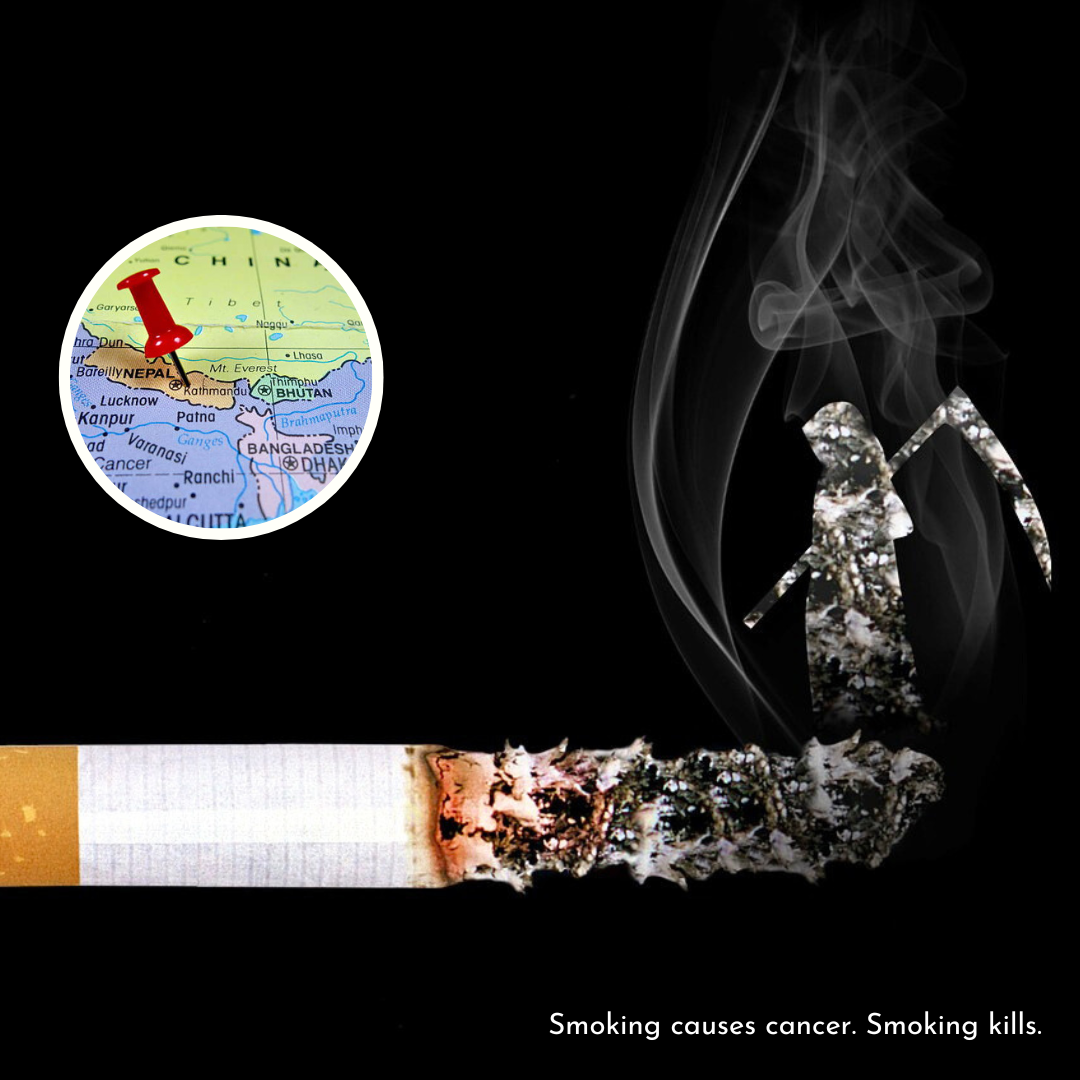Cigarette | Tobacco products | Taxation | Lowest | Health Implications

The government increased the tax rate on tobacco products this budget by a paltry 3% bringing the tax rate on tobacco products to 41%. Still, tobacco products are taxed in the country at relatively low rates despite the severe magnitude of their health risks and economic costs.
According to a report by the Nepal Development Research Institute (NDRI), 27,000 Nepalis die annually due to illness induced by tobacco consumption, which comprises about 14.9% of all deaths.
Smoking, one of the most preferred tobacco consumption forms, is a major risk factor for multiple noncommunicable diseases (NCDs) — cancer, chronic respiratory diseases, cardiovascular diseases, and diabetes. Nepal Burden of Disease 2019 report shows that smoking is the most important risk factor and is responsible for a larger share of total deaths.
And despite the risks, there is a strong prevalence of smoking in Nepal.
A survey carried out between February and May in 2019 revealed that 28.9% of the 6,475 respondents aged between 15 and 69 consumed tobacco in different forms while NDRI shows that tobacco products users are as high as 32% of the total population. The average monthly expenditure on manufactured cigarettes was Rs 1,049.
There is a higher prevalence of smokeless tobacco over cigarettes in recent years, says another study, and more common among men (33%) in comparison to women (5%).
A study found the availability of 23 types of smoking and 21 smokeless tobacco products in the Nepali market. Smoking products include cigarettes, bidi (rolled tobacco), hookah (nargileh), sulfa and chillum or kankad surti (dry tobacco leaves), khaini (lime-mixed tobacco), gutkha (areca nut) and paan (betel quid) with tobacco ingredients are forms of smokeless tobacco products.
According to Nepal Statistics Office, there were 24 industrial establishments that manufactured tobacco products in the fiscal year 2018/19 that produced output amounting to Rs 6.4 billion and provided direct employment to 1,247 individuals.
In the fiscal year 2021/22, the Nepal government collected Rs 24.56 billion in excise duty, 23.84% of its total excise revenue.
According to a recent estimate tobacco use causes an annual economic loss of 1.8% of the global GDP, or around $1.4 trillion. This cost is estimated to be at the extent of 40% in low- and middle-income nations. Reportedly, Nepal loses about Rs 40 billion in the treatment of tobacco-induced diseases in recent times.
Health experts and economists argue that Nepal’s tobacco tax rates do not do justice to the health and economic problems induced by high tobacco consumption while its tax is considerably low compared to WHO’s recommendation of a minimum 75% tax share of the retail price of tobacco.
The overall tax was 24.27% in 2008, which was raised to just 30% in 2018, and now reached 41%. According to NDRI analysis, Nepal's excise tax on tobacco varied from 12.8 to 16.2 %, between 2008 and 2018, at an average of 15.95%. The highest rate of 18.4% was put into effect in 2012. In 2014, the rate fell by 2.1%, and by an additional 1.5 percentage in 2016. When compared to 2016, the excise tax increased by 1.4 percentage points in 2018.
The increase in excise by 25% in the fiscal year 2021/22 was one of the largest in decades which was followed by a 20% increment in the next year. As a result, excise revenue from tobacco products experienced remarkable growth, jumping from Rs 7.2 billion in 2007/08 to Rs 24.6 billion by 2021/22.
Similarly, the health risk tax — another tax imposed on tobacco products — also rose by 20% between 2021/22 and 2022/23. Still Nepal slaps the lowest tax on tobacco products compared to its South Asian counterparts. Bangladesh and Sri Lanka levy over 70% and Maldives over 60% while India and Pakistan both slap tax rates over 60%. And yet the recent budget opted not to raise the tax on cigarettes any further, even as it introduced a 13% value-added tax (VAT) on everyday essentials like potatoes and onions.
A higher tax rate would mean increased revenue and decreased consumption. For instance, Nepal’s excise collection reached Rs 24.6 billion in the fiscal year 2021/22, growing by 4.2 billion from the previous year when it raised the excise by 25%. Considering the trend and potential for improved health outcomes and saving lives, it shouldn't shy away from raising the tax steeply. A 2017 analysis by the British Medical Journal says that higher taxes on tobacco could save about 35 to 45 million lives in South Asia, primarily in India, and recommended that countries implement high tobacco taxes, smoke-free public spaces, warning labels, comprehensive advertising bans and provision of support for smoking cessation services.
In the UK, high tobacco taxes act as a significant government revenue instrument and public health measure, which is also the case globally. The goal of maintaining a high level of tax is to lower tobacco use and the prevalence of smoking — goals that succeeding governments have pursued.
The Nepal government enforced the Tobacco Products (Control and Regulatory) Act, 2068 (2011) to regulate the tobacco market and reduce the health burden of tobacco consumption, and employed measures such as mandatory use of graphic health warnings, banned promotion and advertisement and sales to minors and introduced health risk tax.
Fighting against the high prevalence of tobacco consumption and high tax rates will be an arduous and long-standing task and for desired health and economic outcomes, imposing higher tax rates will prove an effective measure.
Read More Stories
Kathmandu’s decay: From glorious past to ominous future
Kathmandu: The legend and the legacy Legend about Kathmandus evolution holds that the...
Kathmandu - A crumbling valley!
Valleys and cities should be young, vibrant, inspiring and full of hopes with...
Understanding federal grants in fiscal federalism
Local budgets are where democracy meets the daily lives of citizensthis is a...